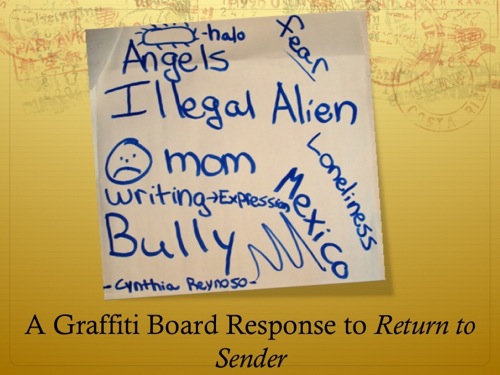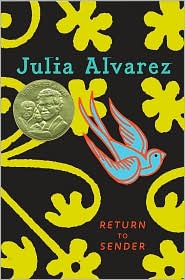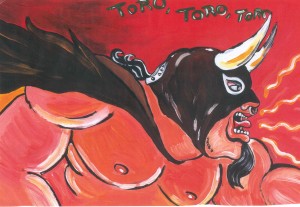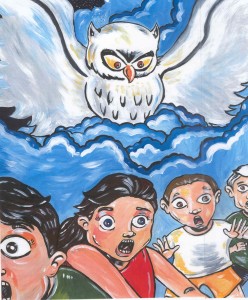By Andrea García, Hofstra University, Hempstead, NY, and Carmen Martínez-Roldán, Universtiy of Texas, Austin, TX
“The girls told me about how they build altars to their relatives who have died, most especially the ones who’ve died in the last year,” Grandma is explaining. “So I asked them if they’d help me do one for Gramps. I don’t call it an altar,” Grandma quickly adds as if she might get in trouble with Reverend Hollister at church… “I call it a memory table.”

In Return to Sender, Alvarez’ storytelling weaves together the cultural practices that define her characters’ interactions with their worlds. Friendship, hard work, loss, and family ties, are all deeply shared values and experiences that influence how each individual character defines his/her role within the narrative.
Through events such as the transformation of the Mexican practice of creating “altars” into what Tyler’s Grandma defines as a “memory table,” we are reminded of the dynamic and ever-changing nature of culture (Nieto, 1999). Like González (2005) indicates, our day-to-day practices are always informed by multiple cultural systems, which in turn help us develop a hybrid and intercultural knowledge base of the world.
This week, we invite readers to consider the ways in which Mari and Tyler begin to discover and understand each other’s cultural identities by sharing and learning about their cultural practices. From sharing El Día de los Muertos to sharing star-gazing at night, Alvarez’ story is rich with cultural encounters between what is considered the majority and the minority culture in this story.
Continue reading



 In our work as Latina teacher educators, we prepare teachers to be successful literacy educators in a multilingual world. In our teaching, we use high quality children’s and adolescent literature in order to invite our students to read multiculturally (Hade, 1997). That is, through small group and whole class literature discussions, we engage pre-service and in-service teachers to make personal connections with the literature and to take a critical stance to explore questions that often reveal the many sociopolitical forces shaping the education of minority students in the United States. These include interpreting signs of power, race, class, and equity, among others, as they are represented in the literature.
In our work as Latina teacher educators, we prepare teachers to be successful literacy educators in a multilingual world. In our teaching, we use high quality children’s and adolescent literature in order to invite our students to read multiculturally (Hade, 1997). That is, through small group and whole class literature discussions, we engage pre-service and in-service teachers to make personal connections with the literature and to take a critical stance to explore questions that often reveal the many sociopolitical forces shaping the education of minority students in the United States. These include interpreting signs of power, race, class, and equity, among others, as they are represented in the literature.
 This is the third of a four part interview with author and illustrator Xavier Garza, 2005 América’s Award Honor Book winner. This interview was conducted electronically by Janine Schall.
This is the third of a four part interview with author and illustrator Xavier Garza, 2005 América’s Award Honor Book winner. This interview was conducted electronically by Janine Schall.